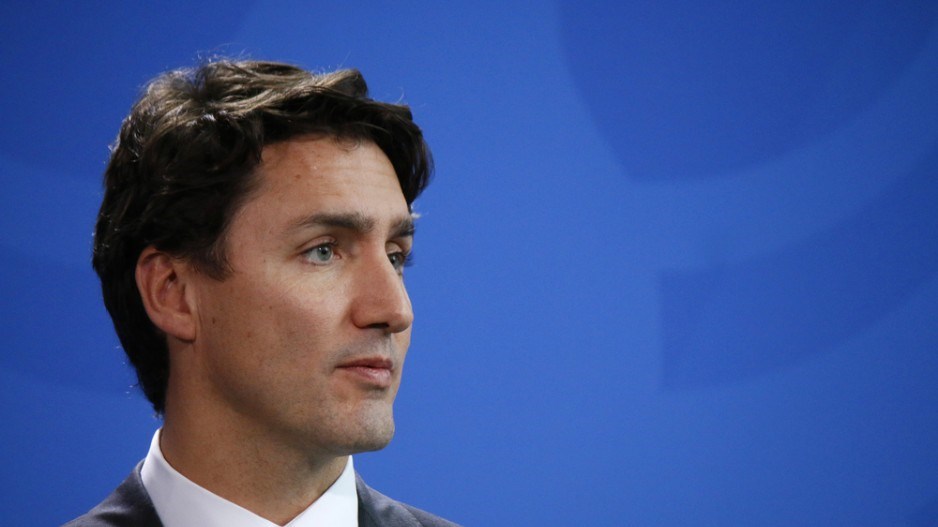Analysis of the 2015 federal election suggested that two groups had chosen to cast ballots in overwhelming numbers compared with previous democratic contests: Canadians between the ages of 18 and 34, and Indigenous Canadians.
Much has been written about the way in which voters aged 18 to 34 embraced the Liberal Party of Canada in 2015, particularly in urban areas. “Strategic voting” played a role in steering some of Canada’s youngest electors towards Justin Trudeau and away from their more traditional ideological homes in the New Democratic Party and the Green Party of Canada.
But one issue that has not been reviewed thoroughly is the commitment of the current federal government to dealing with unresolved Indigenous concerns.
Prime Minister Trudeau appeared to set the bar high in December 2015 – just weeks after being officially sworn in as Canada’s head of government – when he declared: “It is time for a renewed, nation-to-nation relationship with First Nations peoples, one that understands that the constitutionally guaranteed rights of First Nations in Canada are not an inconvenience but rather a sacred obligation.”
The events that have followed Trudeau’s pledge have not provided Canadians with much to celebrate. On the bureaucratic side, two different people have occupied the office of minister of Indigenous services, created in August 2017.
Last month, Opposition MP Charlie Angus visited the Cat Lake First Nation in northern Ontario – a community where homes have been wrecked by mould infestation and where residents are in dire need of medical assistance.
The cornerstone of the seemingly renewed commitment of the federal government was the launch of the National Inquiry into Missing and Murdered Indigenous Women and Girls in September 2016.
A countrywide Research Co. survey conducted last month showed that almost half of Canadians (47%) have followed news stories related to the inquiry “very closely” or “moderately closely” – a proportion that grows to 59% in British Columbia, 52% in Saskatchewan and Manitoba and 51% in Quebec.
In spite of the attention that the inquiry has garnered, Canadians are not satisfied with what they have witnessed so far. Fewer than three in 10 residents (27%) think the inquiry has been “a success,” while almost half (46%) consider it “a failure.”
Canadians aged 55 and over are decidedly more likely to believe that the inquiry has not been satisfactory (59%), but the level of criticism is also higher than the national average in Alberta (51%), Manitoba and Saskatchewan (49%) and British Columbia (48%).
Even Canadians who voted for the Trudeau-led Liberals in 2015 appear disappointed, with just 35% saying the inquiry has been successful. Those who voted for the New Democrats or the Conservative Party of Canada show significantly less approval of the federal government’s efforts (24% and 22%, respectively).
It is understandable for Canadians to be skeptical about the inquiry. Several staffers have left the inquiry commission since it was first established. Last year, a two-year extension was sought by the commissioners, along with an additional $50 million to carry on with the tasks at hand. The federal government countered with a disappointing two-month extension, meaning a report will have to be tabled by April 30 of this year.
In spite of all these negative aspects, Canadians are still hopeful that change can be effected. More than half of respondents to the Research Co. survey (52%) think a renewed relationship with First Nations peoples can be achieved in the country, while one-third (34%) believe this is impossible.
Cynicism about a resolution to this impasse grows with age. While 63% of Canadians aged 18 to 34 think true reconciliation can still happen, the proportion drops to 54% among those aged 35 to 54 and 44% among those aged 55 and over.
It would seem that the residents of Canada who have dealt with the federal government the longest are not as enthusiastic about reconciliation as their younger counterparts. This may be because they have seen similar efforts wither. In 1969, the federal government, headed by the current prime minister’s father, gave itself five years to abolish what was then called the Department of Indian Affairs. It did not happen.
The other issue that remains to be seen is whether Indigenous Canadians, who looked at Trudeau with hope, will develop the same pessimism that is observed in this survey among baby boomers. Their effect may not be measured in the number of seats that stay with the Liberals or go to other parties, but in the realization that the phrase “sacred obligation” carries a burden that few Canadians believe has been matched by the current government’s actions •
Mario Canseco is president of Research Co.




